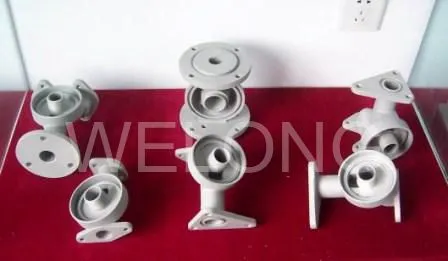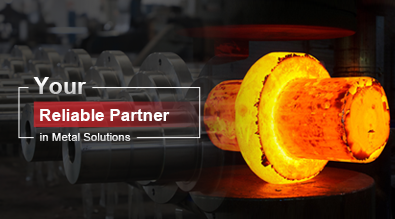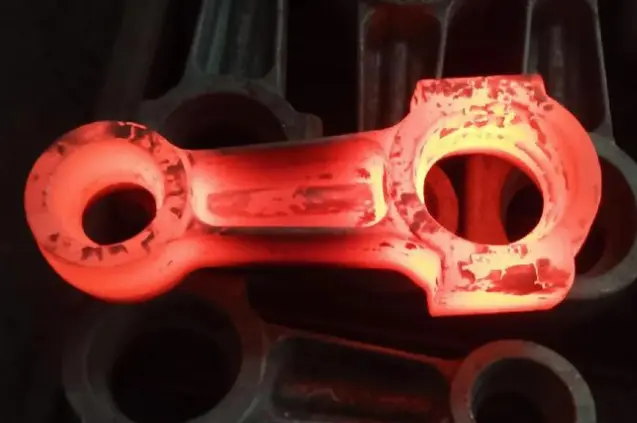What’s the Difference Between Investment Casting and Sand Casting
Investment casting and sand casting are two distinct metal forming processes widely used in manufacturing. While both methods aim to produce metal parts, they differ significantly in their approach, capabilities, and end results. Investment casting, also known as lost-wax casting, is renowned for its ability to create complex, high-precision components with excellent surface finishes. On the other hand, sand casting is a more traditional and versatile method that involves pouring molten metal into a sand mold. Understanding the differences between these two casting processes is crucial for engineers, manufacturers, and designers to make informed decisions about which method best suits their specific project requirements. This blog post will delve into the key distinctions between investment casting and sand casting, exploring their respective advantages, limitations, and ideal applications in various industries.

What are the key advantages of investment casting over sand casting?
Precision and Complexity
Investment casting offers superior precision and the ability to produce intricate, complex geometries that are often challenging or impossible to achieve with sand casting. The investment casting process utilizes wax patterns and ceramic shells, allowing for the creation of highly detailed parts with tight tolerances. This precision is particularly valuable in industries such as aerospace, medical devices, and automotive, where exact specifications are critical. Investment casting can produce parts with thin walls, internal cavities, and intricate external features that would be difficult to achieve with sand casting. The process also allows for the incorporation of undercuts and other complex design elements without the need for additional machining or assembly steps.
Surface Finish
One of the most significant advantages of investment casting is the exceptional surface finish it provides. The smooth ceramic mold used in investment casting results in parts with minimal surface imperfections and excellent dimensional accuracy. This high-quality surface finish often eliminates or greatly reduces the need for secondary machining operations, saving time and costs in post-production. The superior surface finish of investment cast parts is particularly beneficial in applications where aesthetics are important or where smooth surfaces are required for optimal performance, such as in fluid flow components or precision mechanical parts.
Material Versatility
Investment casting offers remarkable versatility in terms of the materials that can be cast. While sand casting is limited to certain metals and alloys, investment casting can be used with a wide range of materials, including high-temperature alloys, stainless steels, and even reactive metals like titanium. This flexibility makes investment casting an ideal choice for producing parts that require specific material properties or performance characteristics. The process also allows for the casting of materials that may be difficult or impossible to machine, providing a unique solution for manufacturing complex parts from challenging materials. Additionally, investment casting can produce parts with consistent material properties throughout, which is crucial in applications where structural integrity and performance are paramount.
How does the investment casting process differ from sand casting?
Mold Creation
The mold creation process is one of the fundamental differences between investment casting and sand casting. In investment casting, a wax pattern is first created that is an exact replica of the desired part. This pattern is then coated with multiple layers of ceramic slurry to form a rigid shell. Once the ceramic shell is complete, the wax is melted out, leaving a precise cavity for the molten metal. This process allows for extremely accurate and detailed molds. In contrast, sand casting uses compacted sand mixed with binders to create the mold. While sand casting molds can be created quickly, they lack the precision and surface smoothness of investment casting molds. The investment casting process's ability to create highly accurate molds contributes significantly to the superior quality of the final cast parts.
Production Volume
Investment casting and sand casting differ significantly in terms of their suitability for different production volumes. Investment casting is typically more cost-effective for small to medium production runs, especially when complex parts are required. The initial tooling costs for investment casting can be lower than those for sand casting, making it an attractive option for prototype development or limited production runs. However, the process can be time-consuming, which may limit its effectiveness for high-volume production. Sand casting, on the other hand, is generally more suitable for large production volumes. The sand molds can be produced quickly and at a lower cost per unit, making sand casting more economical for mass production of simpler parts. The choice between investment casting and sand casting often depends on the required production volume and the complexity of the parts being manufactured.
Design Flexibility
Design flexibility is another area where investment casting shines compared to sand casting. The investment casting process allows for greater freedom in part design, enabling the creation of complex geometries, thin walls, and intricate details that would be challenging or impossible with sand casting. This flexibility is particularly valuable in industries where weight reduction and performance optimization are critical, such as aerospace and automotive. Investment casting can produce parts with internal passages, honeycombed structures, and other complex features that would require multiple operations or be unfeasible with sand casting. Additionally, investment casting allows for the integration of multiple components into a single cast part, potentially reducing assembly costs and improving overall product performance. While sand casting offers its own design advantages, particularly for larger, simpler parts, it generally cannot match the level of design flexibility provided by investment casting.
What industries benefit most from investment casting technology?
Aerospace and Defense
The aerospace and defense industries are among the biggest beneficiaries of investment casting technology. The process's ability to produce complex, lightweight components with high strength-to-weight ratios makes it ideal for manufacturing critical aircraft and spacecraft parts. Investment casting is used to create turbine blades, engine components, structural parts, and various other high-performance components that require precise tolerances and excellent material properties. The process allows for the use of high-temperature alloys and superalloys that can withstand the extreme conditions encountered in aerospace applications. Additionally, investment casting's ability to create intricate internal cooling channels in turbine blades has revolutionized jet engine efficiency and performance.
Medical and Dental
Investment casting plays a crucial role in the medical and dental industries, where precision and biocompatibility are paramount. The process is used to manufacture a wide range of medical implants, surgical instruments, and dental prosthetics. Investment casting's ability to work with biocompatible materials like titanium and cobalt-chromium alloys makes it ideal for producing orthopedic implants, such as hip and knee replacements. In dentistry, investment casting is used to create crowns, bridges, and other dental prosthetics that require a perfect fit and natural appearance. The high level of detail and smooth surface finish achievable with investment casting contribute to the comfort and longevity of these medical and dental devices.
Automotive and Racing
The automotive and racing industries heavily rely on investment casting for producing high-performance engine components, suspension parts, and other critical elements. Investment casting allows for the creation of complex, lightweight parts that can improve vehicle performance and fuel efficiency. In the racing world, where every gram counts, investment cast parts offer the perfect balance of strength, weight reduction, and aerodynamic design. The process is used to manufacture components such as exhaust manifolds, turbocharger housings, and brake calipers. Investment casting's ability to work with high-strength alloys and create intricate cooling channels makes it particularly valuable for producing high-performance engine parts that can withstand extreme temperatures and pressures.
Conclusion
Investment casting and sand casting each have their unique advantages and applications in the manufacturing world. While sand casting excels in high-volume production of simpler parts, investment casting offers unparalleled precision, surface finish, and design flexibility for complex components. The choice between these two methods depends on factors such as part complexity, production volume, material requirements, and desired surface finish. As technology continues to advance, both processes are likely to see further improvements, expanding their capabilities and applications across various industries. Understanding the strengths and limitations of each casting method is crucial for making informed decisions in product design and manufacturing processes.
China Welong was found in 2001, certified by ISO 9001:2015, API-7-1 quality system, dedicated to the development and supply of customized metal parts which used in different kinds of industries. Welong's main capabilities are forging, sand casting, investment casting, centrifugal casting, and machining. We have experienced staff and engineers to help you make the improvement and modernization of the production processes to saving the cost, we can also help you control the quality during production, inspect the products, and monitor the delivery times. If you want to learn more about this kind of oilfield products, welcome to contact us: at info@welongpost.com.
References
1. Smith, J. (2019). Advances in Investment Casting Technology. Journal of Materials Engineering and Performance, 28(4), 2145-2158.
2. Johnson, R., & Williams, T. (2020). Comparative Analysis of Investment and Sand Casting Processes. International Journal of Metalcasting, 14(3), 687-701.
3. Brown, A. (2018). Investment Casting: Principles and Applications in Modern Manufacturing. CRC Press.
4. Lee, S., & Park, K. (2021). Optimization of Investment Casting Parameters for Aerospace Components. Materials Today: Proceedings, 45, 3256-3265.
5. Chen, Y., & Liu, X. (2017). Sand Casting vs. Investment Casting: A Comprehensive Review. Journal of Materials Processing Technology, 250, 318-334.
6. Thompson, E. (2022). The Future of Casting Technologies in Industry 4.0. Advanced Materials and Processes, 180(2), 24-31.

Share your inquiry, get the quotation accordingly!

China WELONG- Your Reliable Partner in Metal Solutions

